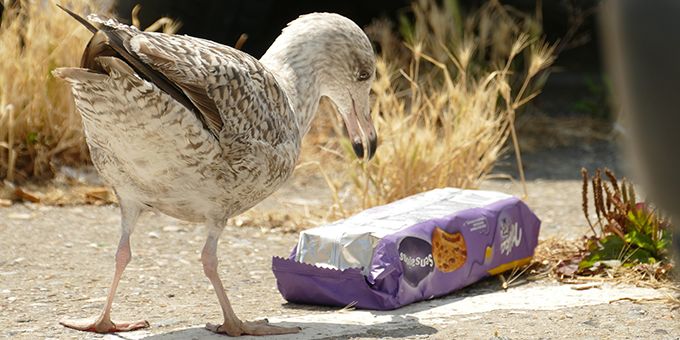Impacts of this waste are widely understood, with rotting items contributing to greenhouse gas emissions, general pollution, and microplastics littering our waterways and infiltrating the food chain. What many don’t seem to understand, however, is the economic impact of waste.
 Is Recycling the New Manufacturing? How Companies Who Take a Green, Circular Approach are Saving Money and the Environment
Is Recycling the New Manufacturing? How Companies Who Take a Green, Circular Approach are Saving Money and the Environment

Ajay Kochhar, Co-Founder, President and CEO | Li-Cycle Corp.
Thanks to continuous innovation, upgrades and a human need to be in front of the trends, the product lifecycle is getting shorter from electronic devices to clothes. As a result, mountains of obsolete, discarded items are being created that can take hundreds of years - and in the case of plastics, thousands - before they begin to break down. In 2019 alone, 2.01 billion metric tons of waste was generated, and if we continue at the same rate, that figure will increase to 3.40 billion metric tons - an increase of 70 percent - by 2050.
The environmental impacts of this waste are widely understood, with rotting items contributing to greenhouse gas emissions, general pollution, and microplastics littering our waterways and infiltrating the food chain. What many don’t seem to understand, however, is the economic impact of waste. With environmentalist pleas mainly focusing on the negative environmental impacts of pollution, the economic impacts like the waste of raw materials and the cost of energy that goes into manufacturing these kinds of products often go under the radar.
With this in mind, it’s clear that the world’s carefree attitude towards waste is not sustainable, but what exactly is the solution?
As it stands, the world operates on a linear economic model, where primary providers supply manufacturing companies with virgin materials to create their products. These products are created, sent to stores, purchased by the consumer, used and then thrown away, with the bulk of these valuable materials ending up in landfills, never to be used again. The redesign of this economic model is where the solution lies, and one economic model that is quickly gaining traction for its viability in the scientific, economic, and environmentalist communities is the concept of a closed loop, or circular economy.
According to The Ellen MacArthur Foundation, a closed loop economy is an industrial system that is restorative or regenerative by intention and design. This means that every product, material, or resource within the economy is maintained, or in use, for as long as possible in an effort to minimize the amount of waste generated. Three principles guide this approach, the first is to design out waste and pollution, the second is to keep products and materials in use for as long as possible, and the third is the aim to regenerate natural systems.
A great example of the circular economy in action can be found in the lithium-ion (li-ion) battery industry, where a number of technologies are emerging to provide a circular pathway for li-ion batteries at the end of their life. Through this process, end-of life batteries are sent to resource recovery faciltiies where, through a process of shredding and wet chemistry, 80 to 100 percent of resources are recycled back into raw materials that can be used to manufacture new batteries or returned to other parts of the economy. These materials are of the same quality as virigin materials, thus enabling a similar product to be manufacutred that could possibly be recycled again in the future. This process reduces both the amount of electronic waste that goes to landfill and the amount of energy required to generate new batteries components from virgin materials, while also preserving finite natural resources like cobalt and lithium.
The numbers back up these reductions too, with a Life Cycle Assessment (LCA) study by Li-Cycle reporting that through resource recovery, GHG emissions per one tonne of battery materials produced by their operations in Ontario are 74.14 percent lower compared to sourcing these materials from mining and refining. In addition to this, reductions in the volume of water used across all stages of production was significant across the board.
While li-ion batteries are just one example of how a closed loop economy can provide immense benefits in terms of both environmental impact and energy savings, the benefits of such an economy can be found when implemented in almost every industry sector. Some beer businesses like Sierra Nevada, for example, have made steps toward closing the loop in the company’s California facility, where beermakers are composting waste generated from the brewery into soil used to grow barley and hops. For Days, a subscription-based clothing brand provides customers with a bundle of clothes that when well-worn and stained, are sent back to the company for a new set of clothes, made directly from those used threads. Apple has also made steps towards building a closed loop, announcing plans to transition to 100 percent recycled products. Furthermore, they have started a ‘take back’ program where customers can trade in their old phones and computers to strip and remake the components into new products.
If adopted on a large-scale, this closed loop economy can offer benefits that stretch further than cost savings and a healthier climate and environment. A closed loop initiative shows potential to create new jobs and curb human exploitation through new industries dedicated to processing recovered resources. While making the shift to a closed-loop economy will undoubtedly have some growing pains during the transition, to reap the myriad of benefits the long-term shift must begin now rather than later.

About Ajay Kochhar
Ajay Kochhar is the Co-Founder, President and CEO at Li-Cycle, an advanced lithium-ion battery resource recovery company. Li-Cycle Technology is a closed loop, economically viable, safe, sustainable and scalable processing technology that provides a solution to the global lithium-ion battery recycling problem.
The content & opinions in this article are the author’s and do not necessarily represent the views of ManufacturingTomorrow
Comments (0)
This post does not have any comments. Be the first to leave a comment below.
Featured Product

